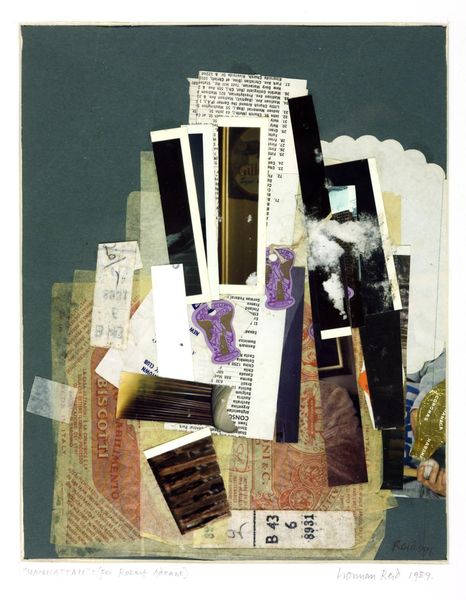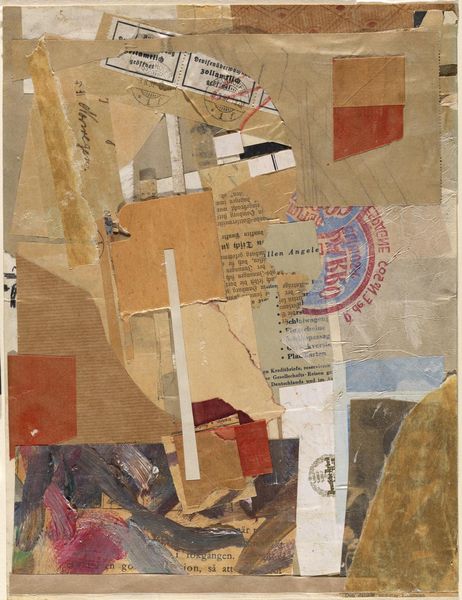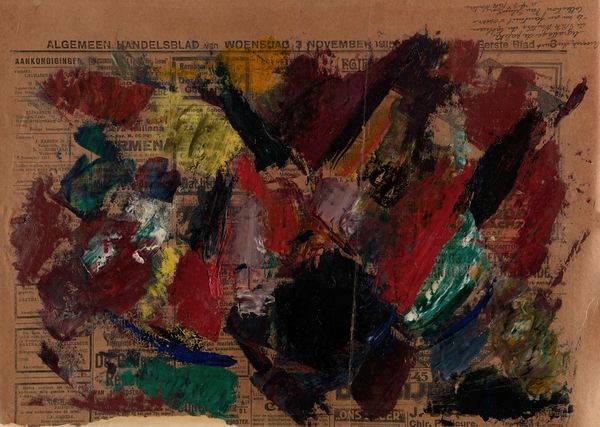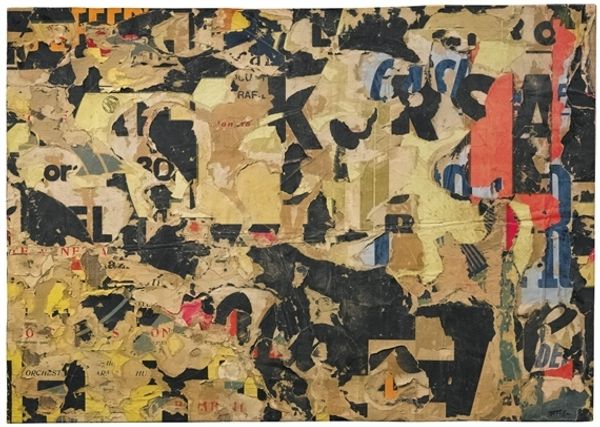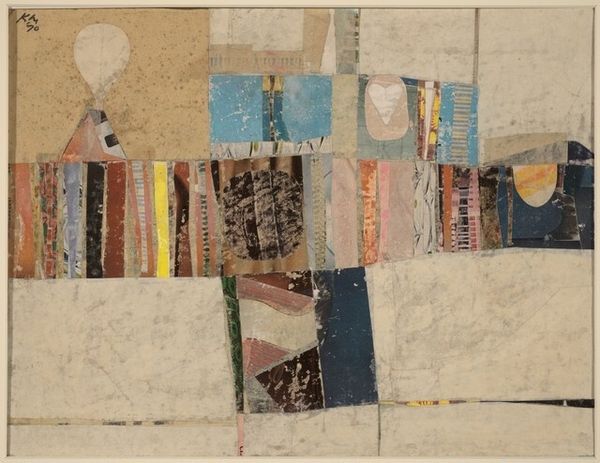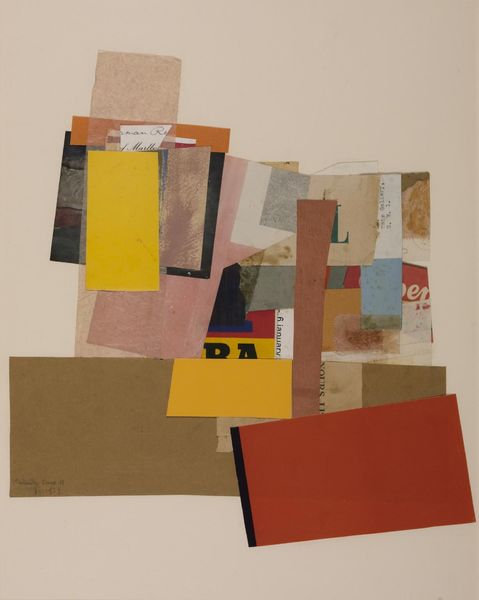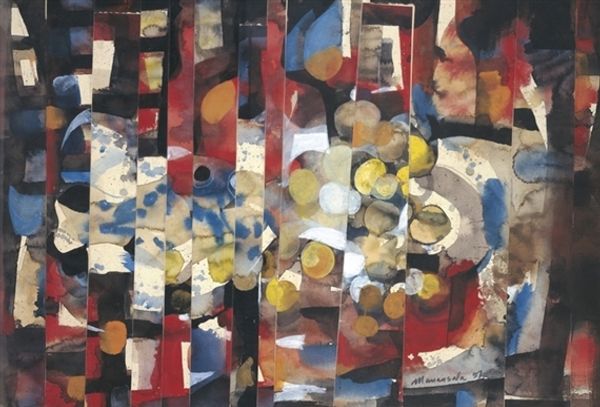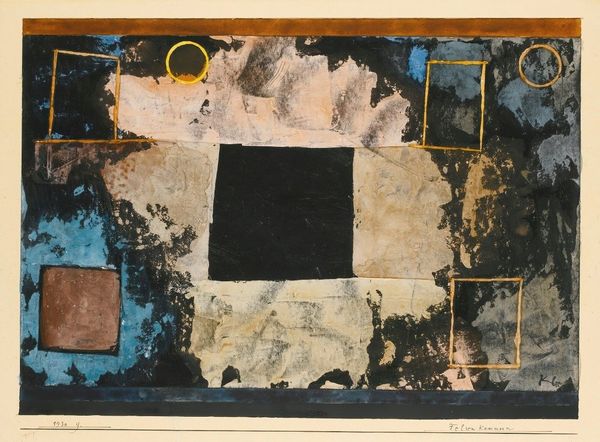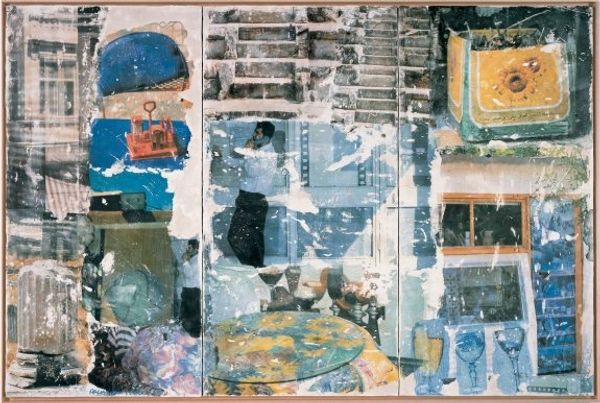
Picture of Spatial Growths - Picture with Two Small Dogs 1920s - 1930s
0:00
0:00
Dimensions: frame: 1155 x 863 x 131 mm support: 970 x 690 x 110 mm
Copyright: © DACS, 2014 | CC-BY-NC-ND 4.0 DEED, Photo: Tate
Editor: Kurt Schwitters' "Picture of Spatial Growths - Picture with Two Small Dogs" is quite a mouthful, and quite a sight. It's a framed collage, seemingly built from paper scraps. It feels... chaotic, almost aggressively so. What do you make of this organized mess? Curator: Ah, "organized mess," I love that! Schwitters, you see, was a master of finding beauty in the discarded. He called his art "Merz," a nonsense word that freed him from artistic convention. It's like he's saying, "Look! Even trash can sing!" Editor: So, it's not just random stuff thrown together? Curator: Never! Each scrap, each tear, is deliberate. Think of it as a visual poem, a diary of everyday life transformed into art. The fragments become clues. What stories do you imagine they whisper? Editor: That perspective really opens it up. I was stuck on "mess," but now I see layers of intentionality, almost like archaeology. Curator: Exactly! It's a conversation between the artist and the detritus of the world. And now, it’s inviting us to join in.
Comments
tatemodern 6 months ago
⋮
http://www.tate.org.uk/art/artworks/schwitters-picture-of-spatial-growths-picture-with-two-small-dogs-t03863
Join the conversation
Join millions of artists and users on Artera today and experience the ultimate creative platform.
tatemodern 6 months ago
⋮
Schwitters started this assemblage of discarded rubbish and printed ephemera in Germany in 1920. Seventeen years later he brought it with him to Norway, having escaped from Nazi Germany. There he added Norwegian material: theatre tickets, receipts, newspaper cuttings, scraps of lace, and a box with two china dogs. The different layers of collage reflect the artist’s journey into exile. Gallery label, January 2016
